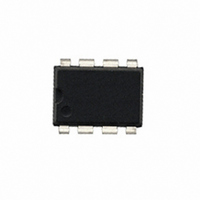604-00038 Parallax Inc, 604-00038 Datasheet - Page 2

604-00038
Manufacturer Part Number
604-00038
Description
IC SENSOR TOUCH/PROXMTY 1CH 8DIP
Manufacturer
Parallax Inc
Series
QProx™r
Type
Capacitiver
Datasheet
1.604-00038.pdf
(12 pages)
Specifications of 604-00038
Touch Panel Interface
1, 2-Wire
Number Of Inputs/keys
1 Key
Resolution (bits)
14 b
Data Interface
Serial
Voltage Reference
Internal
Voltage - Supply
2.5 V ~ 5.5 V
Current - Supply
1.5mA
Operating Temperature
0°C ~ 70°C
Mounting Type
Through Hole
Package / Case
8-DIP (0.300", 7.62mm)
Output Type
Logic
Input Type
Logic
Product
Microcontroller Accessories
Lead Free Status / RoHS Status
Lead free / RoHS Compliant
Interface
-
Lead Free Status / RoHS Status
Lead free / RoHS Compliant, Lead free / RoHS Compliant
1 - OVERVIEW
The QT113 is a digital burst mode charge-transfer (QT)
sensor designed specifically for touch controls; it includes all
hardware and signal processing functions necessary to
provide stable sensing under a wide variety of changing
conditions. Only a single low cost, non-critical capacitor is
required for operation.
Figure 1-1 shows the basic QT113 circuit using the device,
with a conventional output drive and power supply
connections.
1.1 BASIC OPERATION
The QT113 employs bursts of charge-transfer cycles to
acquire its signal. Burst mode permits power consumption in
the microamp range, dramatically reduces RF emissions,
lowers susceptibility to EMI, and yet permits excellent
response time. Internally the signals are digitally processed
to reject impulse noise, using a 'consensus' filter which
requires three consecutive confirmations of a detection
before the output is activated.
The QT switches and charge measurement hardware
functions are all internal to the QT113 (Figure 1-2). A 14-bit
single-slope switched capacitor ADC includes both the
required QT charge and transfer switches in a configuration
that provides direct ADC conversion. The ADC is designed to
dynamically optimize the QT burst length according to the
rate of charge buildup on Cs, which in turn depends on the
values of Cs, Cx, and Vdd. Vdd is used as the charge
reference voltage. Larger values of Cx cause the charge
transferred into Cs to rise more rapidly, reducing available
resolution; as a minimum resolution is required for proper
operation, this can result in dramatically reduced apparent
gain. Conversely, larger values of Cs reduce the rise of
differential voltage across it, increasing available resolution
by permitting longer QT bursts. The value of Cs can thus be
increased to allow larger values of Cx to be tolerated (Figures
4-1, 4-2, 4-3 in Specifications, rear).
The IC is responsive to both Cx and Cs, and changes in Cs
can result in substantial changes in sensor gain.
Option pins allow the selection or alteration of several special
features and sensitivity.
R esult
Start
Figure 1-2 Internal Switching & Timing
Do ne
C ha rg e
Am p
SNS2
SNS1
- 2 -
1.2 ELECTRODE DRIVE
The internal ADC treats Cs as a floating transfer capacitor; as
a direct result, the sense electrode can be connected to
either SNS1 or SNS2 with no performance difference. In both
cases the rule Cs >> Cx must be observed for proper
operation. The polarity of the charge buildup across Cs
during a burst is the same in either case.
It is possible to connect separate Cx and Cx’ loads to SNS1
and SNS2 simultaneously, although the result is no different
than if the loads were connected together at SNS1 (or
SNS2). It is important to limit the amount of stray capacitance
on both terminals, especially if the load Cx is already large,
for example by minimizing trace lengths and widths so as not
to exceed the Cx load specification and to allow for a larger
sensing electrode size if so desired.
The PCB traces, wiring, and any components associated with
or in contact with SNS1 and SNS2 will become touch
sensitive and should be treated with caution to limit the touch
area to the desired location. Multiple touch electrodes can be
used, for example to create a control button on both sides of
an object, however it is impossible for the sensor to
distinguish between the two touch areas.
OUTPUT=DC
TIMEOUT=10 Secs
TOGGLE=OFF
GAIN=HIGH
C
s
ELE C TRO DE
Figure 1-1 Standard mode options
2
3
4
C
OUT
OPT1
OPT2
+2.5 to 5
x
1
8
Vdd
Vss
1.3 ELECTRODE DESIGN
1.3.1 E
There is no restriction on the shape of
the electrode; in most cases common
sense and a little experimentation can
result in a good electrode design. The
QT113 will operate equally well with
long, thin electrodes as with round or
square ones; even random shapes are
acceptable. The electrode can also be
a 3-dimensional surface or object.
Sensitivity
surface area, orientation with respect
to the object being sensed, object
composition, and the ground coupling
quality of both the sensor circuit and
the sensed object.
If a relatively large electrode surface is
desired, and if tests show that the
electrode has more capacitance than
the QT113 can tolerate, the electrode
SNS2
GAIN
SNS1
7
5
6
LECTRODE
is
C
s
related
G
10nF
EOMETRY AND
ELECTRODE
to
SENSING
electrode
C
S
x
IZE





















